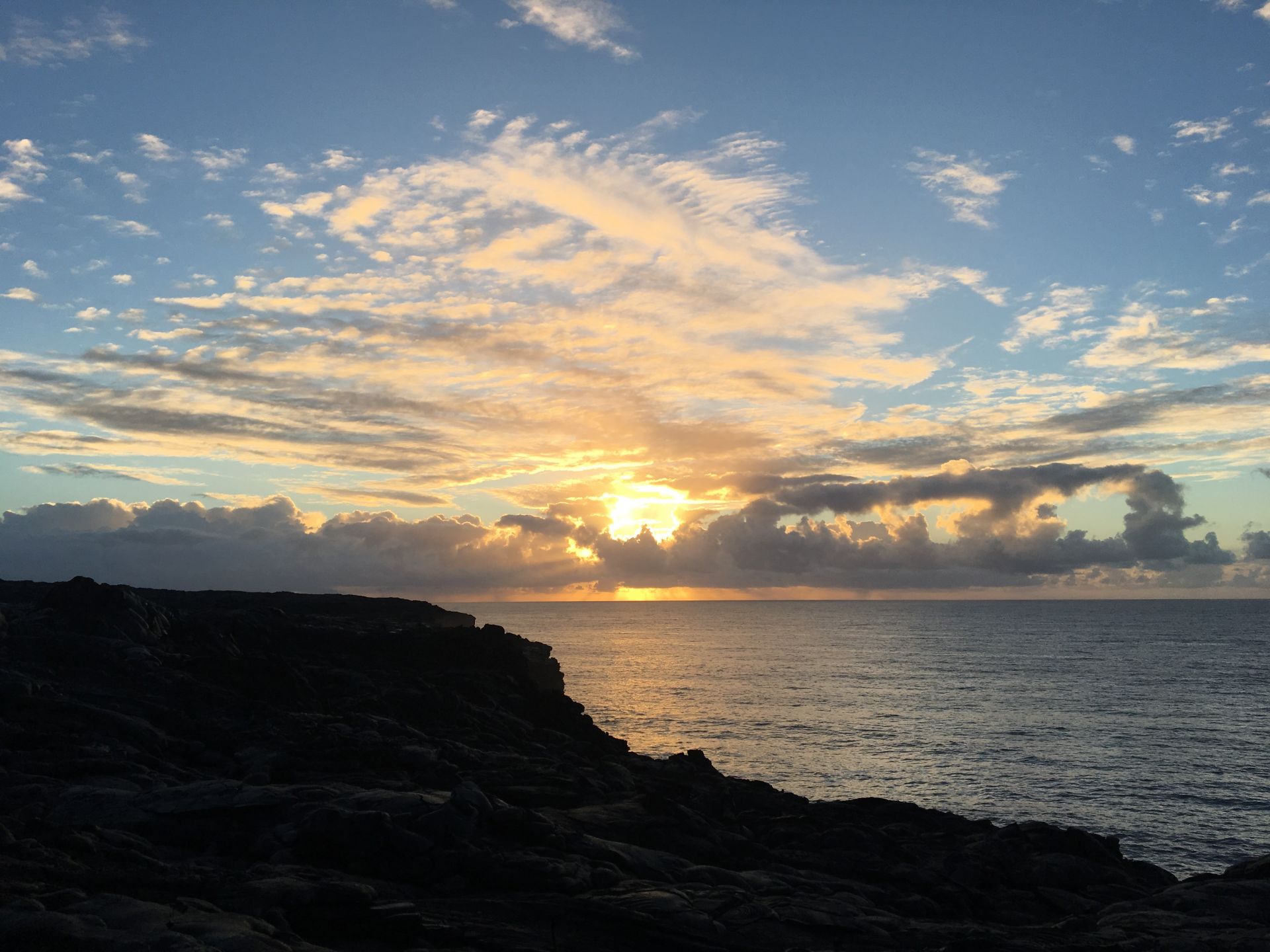Hawaiian tradition, culture and way of life are guided by the movement of Ka Lā, Ka Mahina, and nā kini hōkū. The ancient people of Hawaii are well versed in environmental and celestial signs that are the foundation of their clock and calendar.
Days and months are based upon the cycle of Ka Mahina, while seasonal or annual periods are guided by Ka Lā and nā kini hōkū. Work is done according to the characteristics of each day, month, and season. Hawaiian timekeeping traditions contains a vast amount of knowledge and information regarding nohona Hawaii.
Wā means time or a period of time. Timekeeping is the practice of determining and measuring wā. Hawaiian timekeeping is not very different from how we keep time in modern days. Both timekeeping methods use tools such as clocks and calendars to track time. The purpose of timekeeping is also similar. Ancient Hawaiians kept track of time for planning purposes and documenting events. The biggest differences are the tools used to measure time, the perception of time, and the standards used to measure a period of time.
Nowdays we use clocks/watches, planners, and calendars. Ancient Hawaiians utilized celestial and environmental timepieces to track time. Ke aouli is the face of the Hawaiian clock. Ka Lā, Ka Mahina, and nā kini hōkū are the hands to the clock. Hōʻailona ʻāina are the numbers on the face of a clock and calendar used to that are used to calculate periods of time. Observations of mea lani and their placement in relation to hōʻailona ʻāina are how ancient Hawaiians reckon time.
Modern timekeeping is used to schedule life in accordance with man’s desires and needs. The nohona of the people in ancient Hawaii was guided by the schedule of their environment. For ancient Hawaiians, times of work and rest within a day, month or year are based upon what is being observed while being compared to historical observations. Since time was tracked to determine activities of work, rest, and worship, the rhythms and cycles of the ʻāina, moana, and lani are the foundation of Hawaiian timekeeping.
Modern timekeeping measures time by seconds, minutes, hours, days, months, and years based on the rhythm of a clock and mathematical calculations. The Hawaiian clock and calendar measures time in periods of time in a day, days, lunar months, seasons, and years based upon the rhythms and cycles of environmental factors or the length of time it takes to complete a task.
Skills in deductive reasoning and observation are the most valuable tools in Hawaiian timekeeping traditions. Using the historical observational knowledge of Hawaiian timekeeping traditions, along with keen observational and critical thinking skills are required in order to use the timepieces of ancient Hawaiians.
Though ancient Hawaiians did not have a written language, their timekeeping traditions have not been lost. Hawaiian timekeeping traditions are not widely used in modern days, but it still is alive in the culture and lifestyle of many Hawaiians today. Significant events are documented in the moʻolelo, oli, and mele. Fishing, farming, and other culturally grounded activities continue to utilize celestial, environmental, and social timekeeping practices keeping Hawaiian timekeeping traditions alive.

